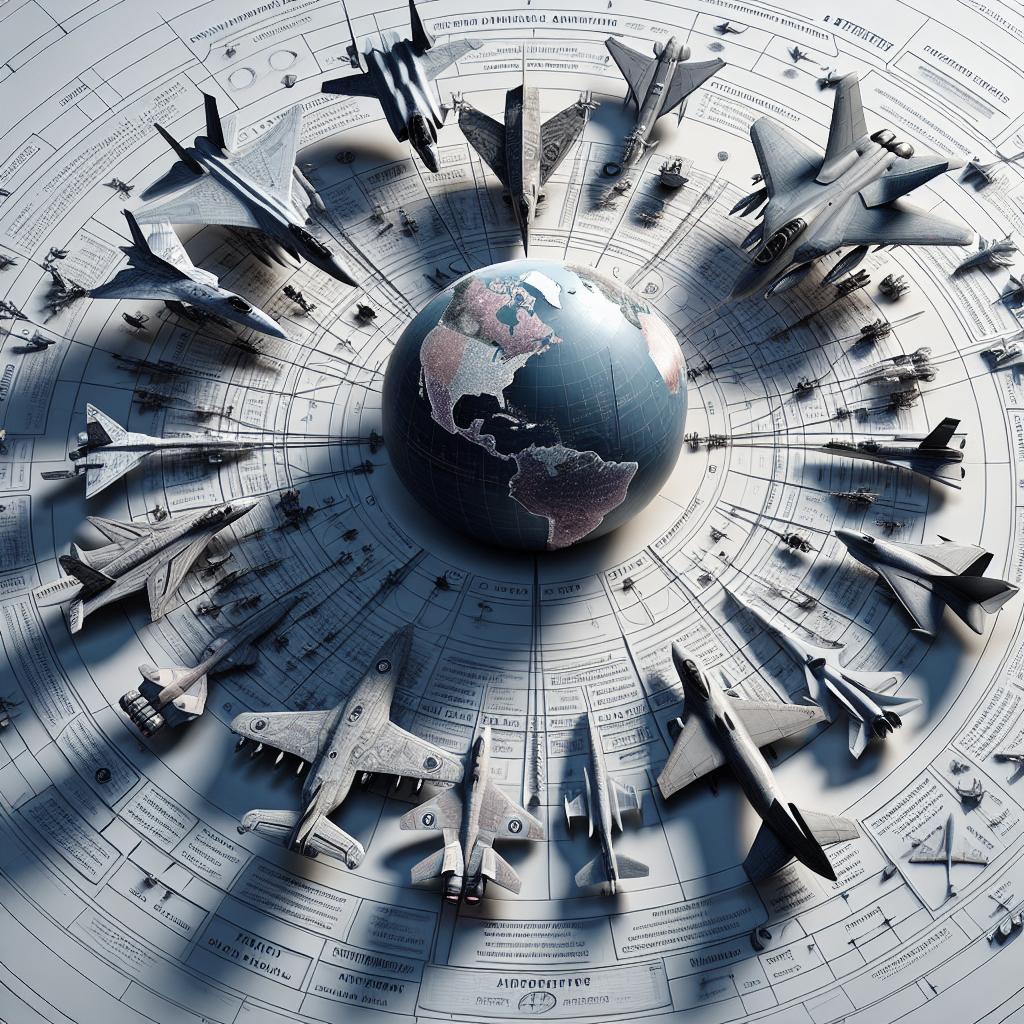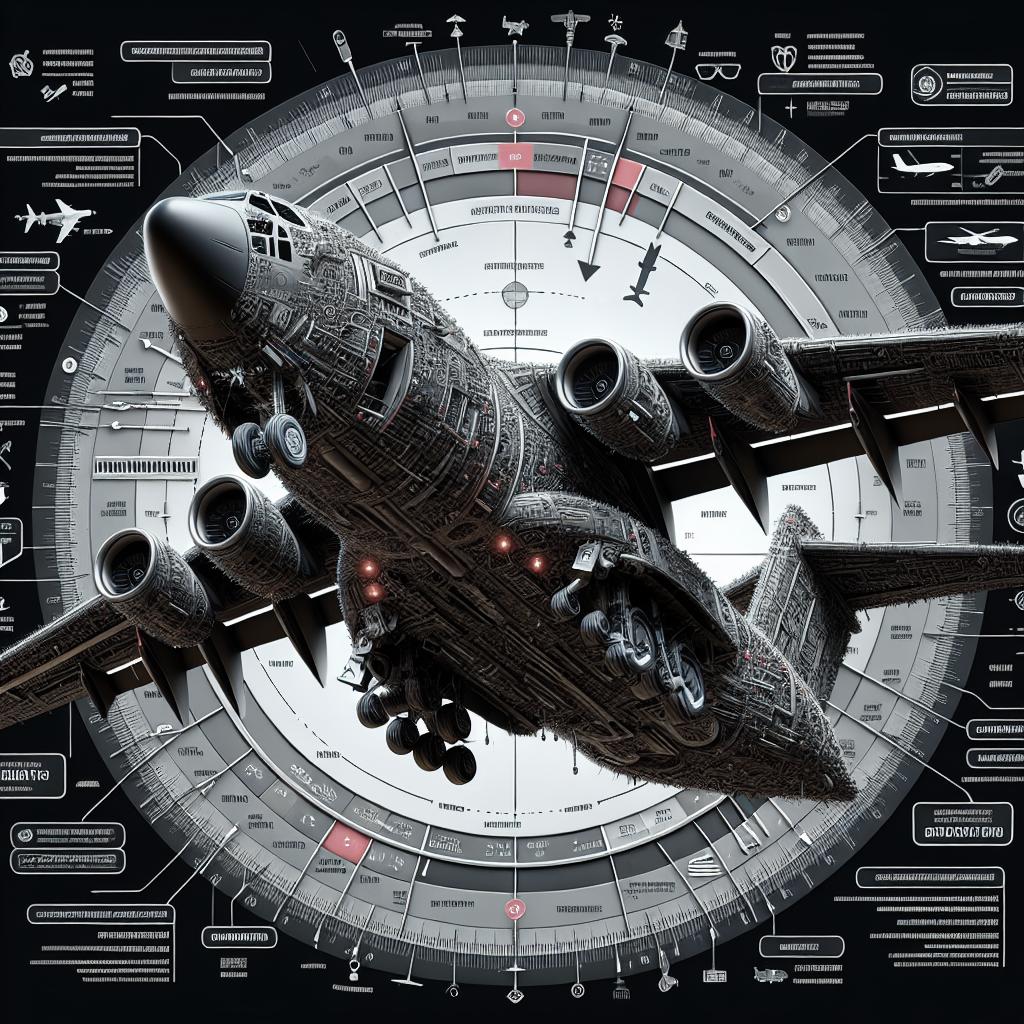“`html
Browse international agreements and arrangements
Military aviation is a complex and highly regulated aspect of international relations, ensuring that operations in the sky follow established norms and rules. Numerous international agreements and arrangements govern this domain, promoting cooperation and mitigating conflicts. This blog post provides an overview of key international agreements related to military aviation, highlighting prevalent treaties, conventions, and specialized arrangements. Understanding these agreements is essential for appreciating the legal frameworks that underpin military aviation and ensuring that activities in this field remain safe and predictable.
Agreements
One of the most significant agreements in military aviation is the Chicago Convention of 1944. Formally known as the Convention on International Civil Aviation, it established the International Civil Aviation Organization (ICAO), which sets international air navigation rules and standards, though primarily for civilian aviation. However, the overarching principles affect military aviation indirectly by regulating the use of airspace and enhancing global aviation safety. The Open Skies Treaty is another critical international agreement. Signed in 1992 and effective since 2002, it allows signatory states to conduct unarmed aerial surveillance flights over each other’s territory. This treaty aims to increase transparency, reduce the risk of conflicts, and promote mutual understanding and trust among nations.
Agreements
The North Atlantic Treaty Organization (NATO) Standardization Agreements (STANAGs) are crucial for ensuring interoperability among member states’ military forces. These agreements cover a wide range of military procedures, including those related to aviation. By standardizing operational procedures, communication protocols, and technical specifications, STANAGs facilitate coordinated and efficient joint operations among NATO allies. Additionally, the Air Defense Identification Zone (ADIZ) agreements play a pivotal role in military aviation. ADIZs are designated areas of airspace where the identification, location, and control of civil aircraft are required in the interest of national security. These zones help nations detect and monitor military aircraft entering their airspace, thereby preventing potential threats and ensuring airspace sovereignty.
Agreements
Bilateral agreements between nations also play a critical role in military aviation. For example, the United States and the United Kingdom have long-standing bilateral aviation agreements that allow for the stationing and operation of military aircraft in each other’s territories. These agreements facilitate joint exercises, training missions, and rapid deployment capabilities, thereby strengthening their military cooperation and readiness. Similarly, the Status of Forces Agreements (SOFAs) outline the legal status of military personnel stationed in a host country. These agreements address issues such as jurisdiction, entry, exit, and the use of facilities, ensuring smooth and lawful operations of foreign military forces. SOFAs are vital for maintaining harmony and avoiding legal disputes between allied nations.
Agreements
The Treaty on Open Skies is another instrumental agreement in the realm of military aviation. This treaty, which came into force in 2002, allows signatories to conduct unarmed aerial surveillance flights over the territories of other parties. The primary purpose of this treaty is to enhance mutual understanding and confidence by providing all participants a direct means to gather information regarding military forces and activities. Another significant agreement is the Comprehensive Nuclear-Test-Ban Treaty (CTBT). Although primarily focused on prohibiting nuclear weapon test explosions, it also has implications for military aviation. Aircraft are used for monitoring compliance with the treaty through atmospheric sampling and airborne surveillance missions to detect any nuclear tests.
Agreements
The Incidents at Sea Agreement (INCSEA) between the United States and the Soviet Union, signed in 1972, was designed to prevent dangerous encounters between naval and air forces by establishing rules for aerial and maritime behavior. Although the Cold War has ended, similar bilateral agreements between various nations continue to function, promoting safe interactions at sea and in the air. The Hague Code of Conduct against Ballistic Missile Proliferation (HCOC) indirectly influences military aviation. The HCOC encourages transparency and confidence-building measures regarding ballistic missile activities, including launches, which involve extensive aviation protocols and testing procedures.
Agreements
Regional agreements also play a pivotal role. For instance, the European Defense Agency (EDA) arranges collaborative defense projects, including those related to aviation. By pooling resources and harmonizing standards, EDA initiatives enhance the capabilities of European military aviation, promoting security and operational synergy across the continent. Another regional cooperation is through the Association of Southeast Asian Nations (ASEAN) Defense Ministers’ Meeting (ADMM). The ADMM fosters defense and aviation collaboration among Southeast Asian countries, ensuring peace and stability in the region through joint exercises, information exchange, and coordinated operations.
Agreements
The International Air Services Transit Agreement (IASTA) is essential for understanding how civilian and military aviation coexist. While primarily focused on civil air services, it also indirectly affects military aviation by regulating transit rights and ensuring that flights, both civil and military, comply with international norms. Similarly, the Protocol Relating to an Amendment to the Convention on International Civil Aviation deals with various aspects of airspace management and sovereignty. This protocol ensures that military and civil aviation activities are conducted safely and orderly by establishing clear guidelines and standards.
Agreements
Coordination through international organizations is also crucial. For instance, the United Nations Aviation Unit assists in various peacekeeping and humanitarian missions, often requiring seamless integration with military aviation. By establishing protocols and guidelines, the UN ensures that its aviation activities do not conflict with military operations. Moreover, the International Maritime Organization (IMO) addresses issues where maritime and aviation concerns intersect, particularly in cases involving aircraft operations over international waters. The IMO’s regulations ensure safety and cooperation, impacting military aviation activities that involve naval aviation components.
Agreements
Another notable agreement is the Comprehensive Military Agreement (CMA) between North and South Korea. This agreement, signed in 2018, includes measures to cease all hostile activities and avoid accidental military clashes, including specific provisions to halt live-fire drills and no-fly zones near the border. Though region-specific, the CMA exemplifies how military aviation can be regulated to enhance peace and stability. Joint Defense Cooperation Agreements (JDCAs) between countries like the United States and Japan include components crucial for military aviation. These agreements ensure mutual support, joint exercises, and share technological advancements, making them vital for operational readiness and strategic deterrence.
Agreements
The Declaration on the Conduct of Parties in the South China Sea (DOC) has important implications for military aviation. While the primary focus is on naval conduct and preventing conflicts in disputed waters, it also encompasses airspace considerations, calling for self-restraint and peaceful dispute resolution mechanisms among claimants. Additionally, the African Union (AU) Peace and Security Council has agreements facilitating military aviation cooperation among member states. These agreements support conflict resolutions, humanitarian missions, and joint exercises, contributing to regional stability and security.
Agreements
Engagement through multinational exercises can be seen through agreements like the Rim of the Pacific (RIMPAC) Exercise, which involves numerous countries coordinating military aviation activities. These exercises focus on interoperability, crisis response, and readiness, helping to showcase the importance of collaborative military aviation protocols. Similarly, the Five Power Defence Arrangements (FPDA) including Australia, Malaysia, New Zealand, Singapore, and the United Kingdom, serve as a regional defense pact involving joint military aviation exercises fostering cooperative defense capabilities.
Agreements
Security and operational protocols are also vital, as highlighted by the Air Traffic Management (ATM) agreements. These agreements ensure that military and civilian air traffic management are harmonized to avoid conflicts, facilitate safe navigation, and enhance operational efficiency. Furthermore, the Bilateral Aviation Safety Agreements (BASAs) ensure the recognition of safety standards and certification processes between signatory states. They are crucial for mutual recognition of airworthiness, enhancing collaboration in military and civilian aviation endeavors.
Agreements
Space and cyber elements of military aviation are also increasingly prominent. Agreements like the Outer Space Treaty lay down principles for the peaceful use of outer space, impacting military aviation by prohibiting weaponization. The conventions ensure that aviation operations considering space-bound segments remain peaceful and cooperative. Moreover, Cybersecurity Agreements focusing on aviation infrastructure are gaining traction. As military aviation incorporates high-tech communication and navigation systems, agreements to secure these systems against cyber threats are essential for operational integrity and national security.
Agreements
Unmanned Aerial Vehicles (UAVs) or drone usage in military aviation is guided by several international frameworks and bilateral agreements. The Missile Technology Control Regime (MTCR) and the Wassenaar Arrangement both address UAV technology, controlling the proliferation and ensuring responsible use and transfer. The European Union (EU) has been proactive in establishing regulations for civil and military UAV operations, promoting shared guidelines and practices. This drives standardization and compliance across member states, ensuring safe and effective UAV integration into airspace.
Agreements
Intelligence-sharing agreements often underpin military aviation operations, enabling countries to collate and utilize critical information for defense strategies. The Five Eyes alliance, comprising the US, UK, Canada, Australia, and New Zealand, exemplifies effective aerial reconnaissance and surveillance through shared intelligence efforts. Similarly, agreements on Joint Intelligence, Surveillance, and Reconnaissance (JISR) within organizations like NATO enhance situational awareness and response capabilities. This collaboration ensures effective use of airborne assets to support security objectives.
American Institute in Taiwan & The Taipei Economic and Cultural Representative Office
The American Institute in Taiwan (AIT) and the Taipei Economic and Cultural Representative Office (TECRO) have agreements crucial for US-Taiwan military cooperation. These agreements involve provisions for defense support, military aircraft transits, and joint exercises, highlighting the strategic importance of their partnership. Additionally, the Taiwan Relations Act governs military interactions, ensuring that Taiwan remains capable of self-defense. While not formal treaties, these arrangements reflect significant military aviation cooperation and commitment to regional security.
Additional information:
These international agreements and arrangements underscore the collaborative nature of military aviation. Effective governance involves multilateral treaties, regional pacts, and bilateral agreements that ensure safety, interoperability, and strategic stability. Staying abreast of these developments is essential for nations to navigate the complex and dynamic field of military aviation.
| Agreement | Description |
|---|---|
| Chicago Convention of 1944 | Established ICAO, regulating international air navigation and indirectly affecting military aviation. |
| Open Skies Treaty | Allows unarmed aerial surveillance flights over territory of signatories for transparency. |
| STANAGs | Standardization agreements by NATO for interoperability in military procedures and aviation. |
| SOFAs | Define the legal status of foreign military personnel in host countries, ensuring lawful operations. |
| INCSEA | Protocols to avoid dangerous encounters between naval and air forces. |
| CTBT | Prohibits nuclear tests, requiring military aviation for compliance monitoring. |
| DOC | Ensures peaceful airspace conduct in the South China Sea region. |
| UN Aviation Unit | Guidelines for integrating peacekeeping and humanitarian missions with military aviation. |
| FPDA | Encourages regional military collaboration and joint aviation exercises. |
| AIT & TECRO | Agreements facilitating US-Taiwan military aviation cooperation and strategic defense. |
“`


